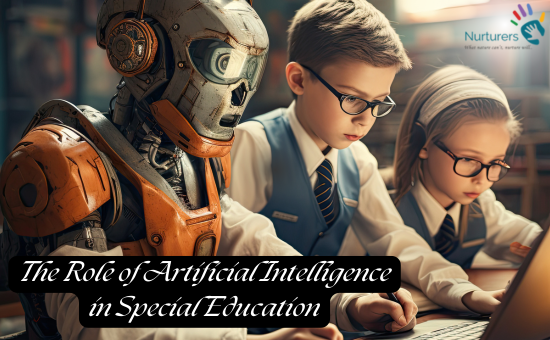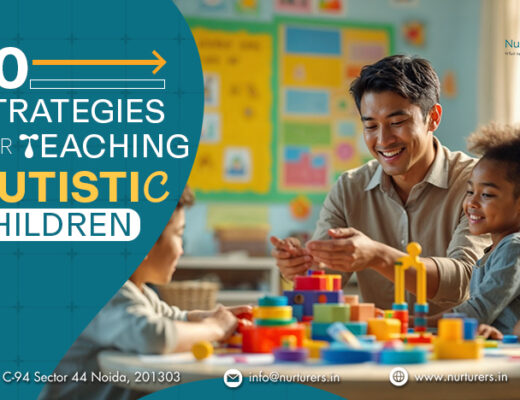
Artificial Intelligence (AI) is reshaping education, especially in special education, by opening new doors for children with disabilities to learn, grow, and connect in ways once thought impossible. But AI isn’t just advanced technology—it’s a tool that complements the care of teachers and parents, empowering every child to thrive in their own unique way.
What Does AI Offer to Special Education?
Think of AI as a thoughtful assistant, designed to adapt and meet the individual needs of each child. It doesn’t replace the warmth of teachers or parents but enhances their efforts. From improving speech to simplifying communication, AI creates a more inclusive education and tailored learning experience.
How AI Makes a Difference?
Learning That Fits Each Child
For children who find it hard to express their thoughts verbally, communication can be a daily struggle. Simple tools like speech-to-text apps can change this by giving them an easy way to share their feelings and ideas. These tools strengthen their ability to connect with teachers, friends, and family, making communication a positive experience rather than a challenge.
Helping Every Child Find Their Voice
For some children, expressing themselves with words can feel like an uphill battle. This can make simple conversations with teachers, friends, or family seem frustrating or even impossible. Speech-to-text tools offer these children a way to share their thoughts and emotions in a way that feels natural to them. By making communication easier, these tools help children connect with the people around them, building confidence and fostering stronger relationships.
Recognizing Struggles Early
Sometimes, a child’s learning or developmental challenges can go unnoticed in the beginning. By observing how a child learns and interacts, parents and teachers can pick up on subtle signs that might indicate a need for additional support. Early recognition makes a big difference—it ensures that children receive the help they need before the challenges grow bigger, keeping them on track and boosting their confidence.
Opening Doors for Every Child
For children with physical disabilities, joining in classroom activities can sometimes feel out of reach. With tools like eye-tracking systems and voice-activated devices, these barriers are being removed. Now, children of all abilities can participate in lessons and activities, ensuring that everyone has the opportunity to learn, grow, and succeed together.
Helping Teachers Make a Difference
Teachers play a vital role in shaping a child’s future. Their dedication to nurturing young minds and helping students overcome challenges is inspiring. However, no two children learn the same way, and understanding each child’s specific needs can be difficult. With the right tools, teachers can monitor progress and identify areas where extra help is needed, enabling them to tailor their approach for every student. This personalized attention ensures that no child feels left behind and allows teachers to focus on unlocking each student’s potential.
Working Together for a Brighter Tomorrow
Education is about more than textbooks and exams—it’s about giving every child the confidence to grow and the tools to succeed. Building an inclusive and supportive environment requires teamwork from parents, teachers, and caregivers. By working together, we can create a space where children feel valued, supported, and ready to overcome challenges. When everyone collaborates, we pave the way for a future where every child can thrive and shine in their own unique way.
How AI Is Used in Special Education?
Making Communication Simple and Fun
For children who find it difficult to speak, learning doesn’t have to feel like a struggle. Speech therapy apps use games and activities to make the process enjoyable. These tools help children practice their speech and language skills in a way that feels natural and playful, reducing stress and building confidence.

Helping Every Child Be Heard
For children who can’t speak, assistive communication devices are truly transformative. These tools act as their voice, allowing them to share their thoughts, needs, and feelings. Whether it’s asking for help or expressing emotions, these devices enable children to connect with the people around them, making them feel understood and valued.
Bringing Learning to Life: Visual Learning Tools
Some children learn best when they can see things in action. Visual learning tools use pictures and videos to make lessons more engaging and easier to understand, especially for kids with autism or ADHD. They make complex ideas simple and hold children’s attention.
Turning Education into Play: Educational Games
AI-powered games bring fun into learning. These games challenge kids to solve problems, think creatively, and build skills while having a great time. It’s a wonderful way to keep children motivated and excited about their education.
Creating a Place for Everyone: Inclusive Classrooms
AI helps make classrooms more welcoming for all students. Tools like captions or audio descriptions ensure that children with hearing or vision impairments can fully participate. It’s all about making sure every child feels included and supported.
The Challenges We Face
While technology is making great strides in education, there are still some challenges to address:
- Limited Access: Many schools don’t have the resources to invest in advanced tools, leaving some children without access to these helpful innovations.
- Privacy Issues: Keeping children’s personal information safe is a priority, and any use of technology in education must ensure data is well-protected.
- The Human Connection: No tool can replace the understanding and compassion of a caring teacher. A teacher’s presence and guidance are essential for a child’s growth.
- Teacher Support: Educators need proper training to feel confident using new tools. Without guidance, even the most advanced technology can feel confusing or intimidating.
A Brighter Future Ahead
Despite these challenges, the future looks hopeful. Tools like virtual reality and devices that help children communicate or express emotions are transforming classrooms. These innovations are creating more inclusive learning environments, giving every child, especially those with special needs, the chance to participate, grow, and succeed.
Working Together for Change
Technology alone isn’t the solution—it’s a tool that works best when paired with the care and guidance of teachers and the support of families. For children with disabilities, these tools can help them express themselves, learn at their own pace, and gain confidence. By working together, parents, teachers, and caregivers can create a world where every child, no matter the challenges, has the opportunity to thrive and achieve their best.

Hi! I am Swati Suri, a Special Educator with 9+ years of experience and the founder of Nurturers. I am passionate about helping children with special needs and supporting their families every step of the way.

